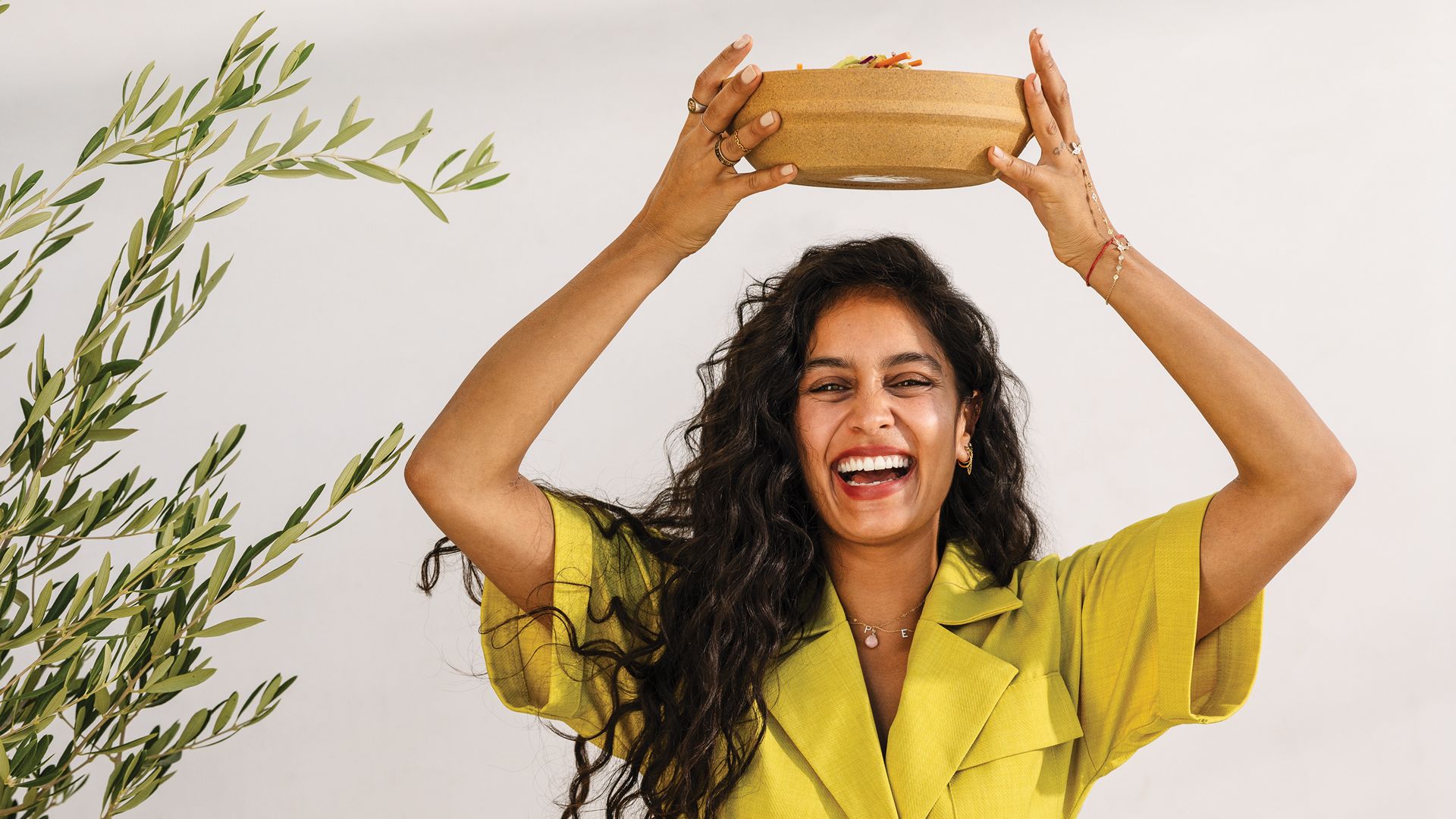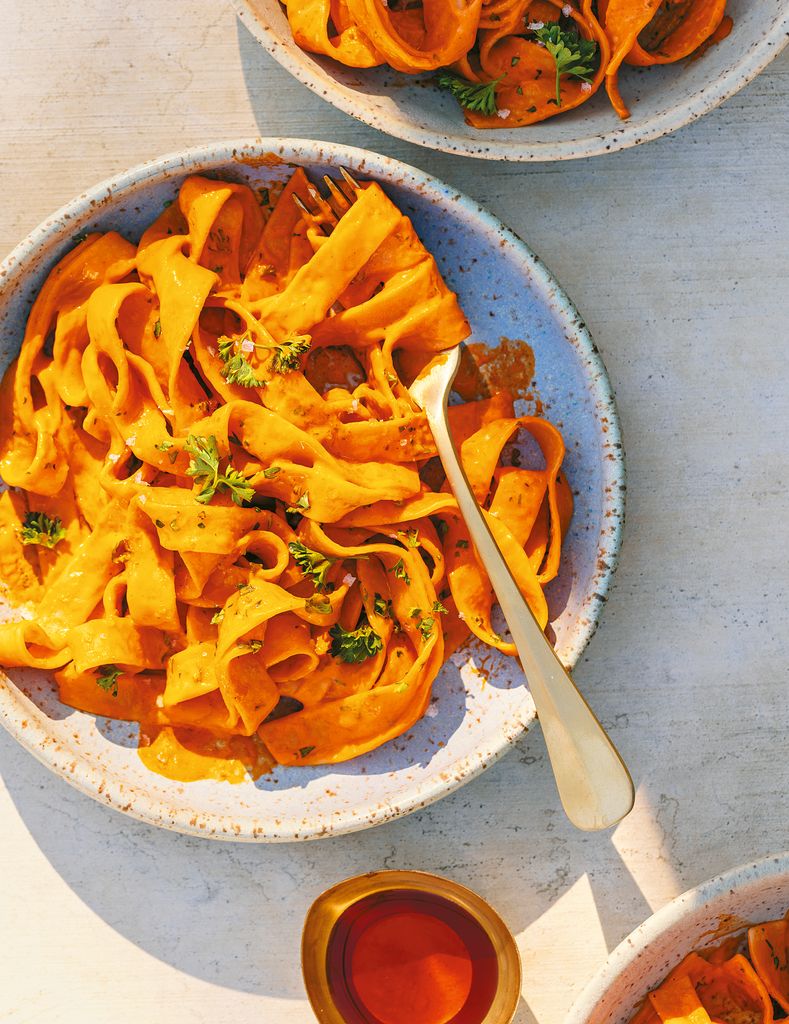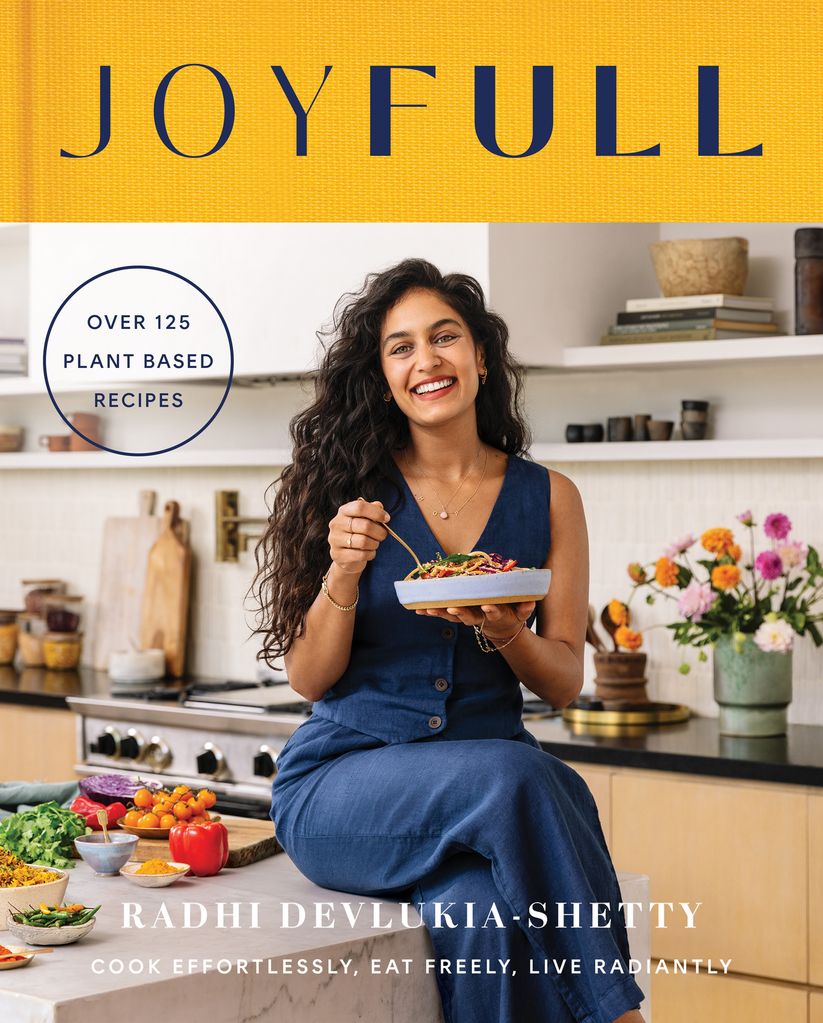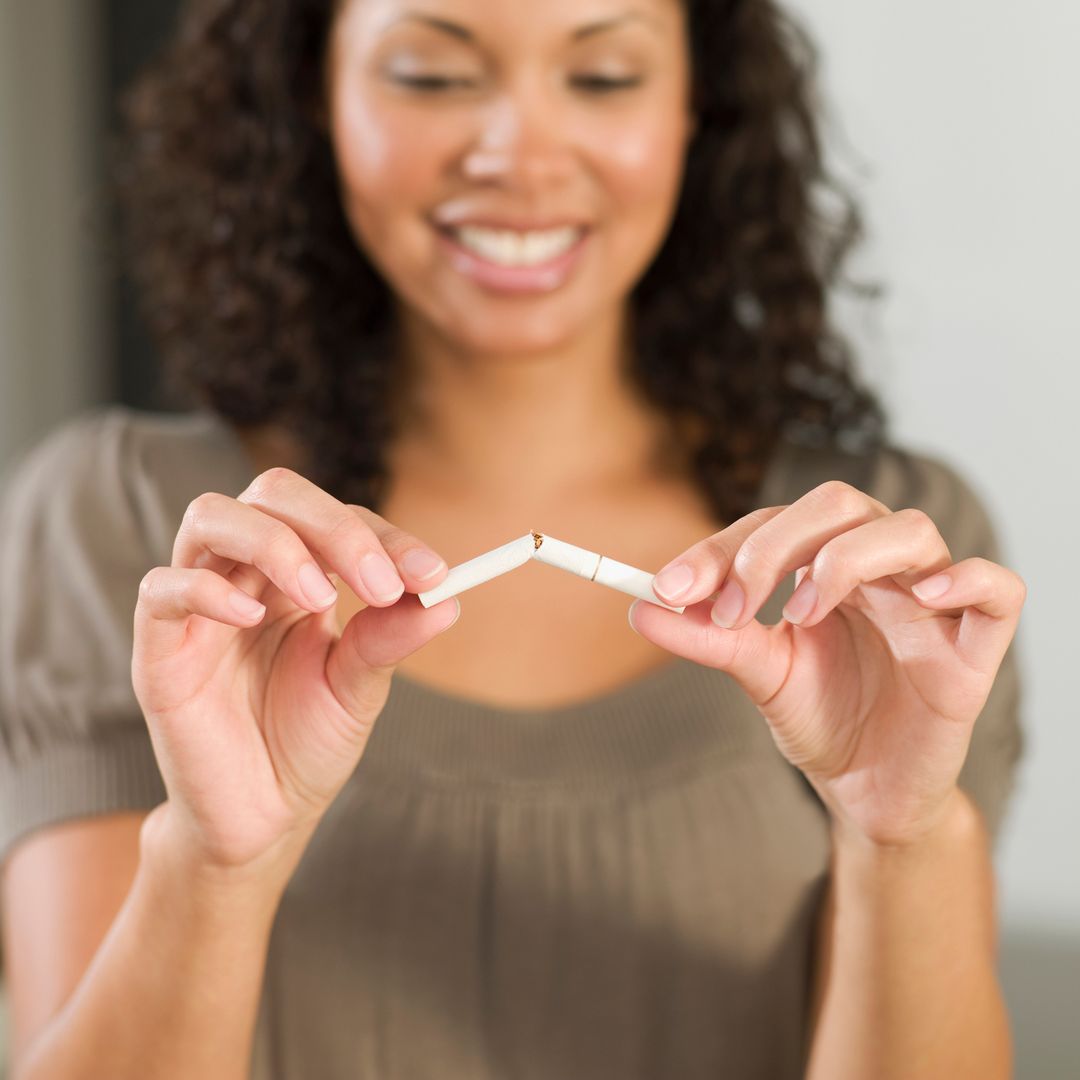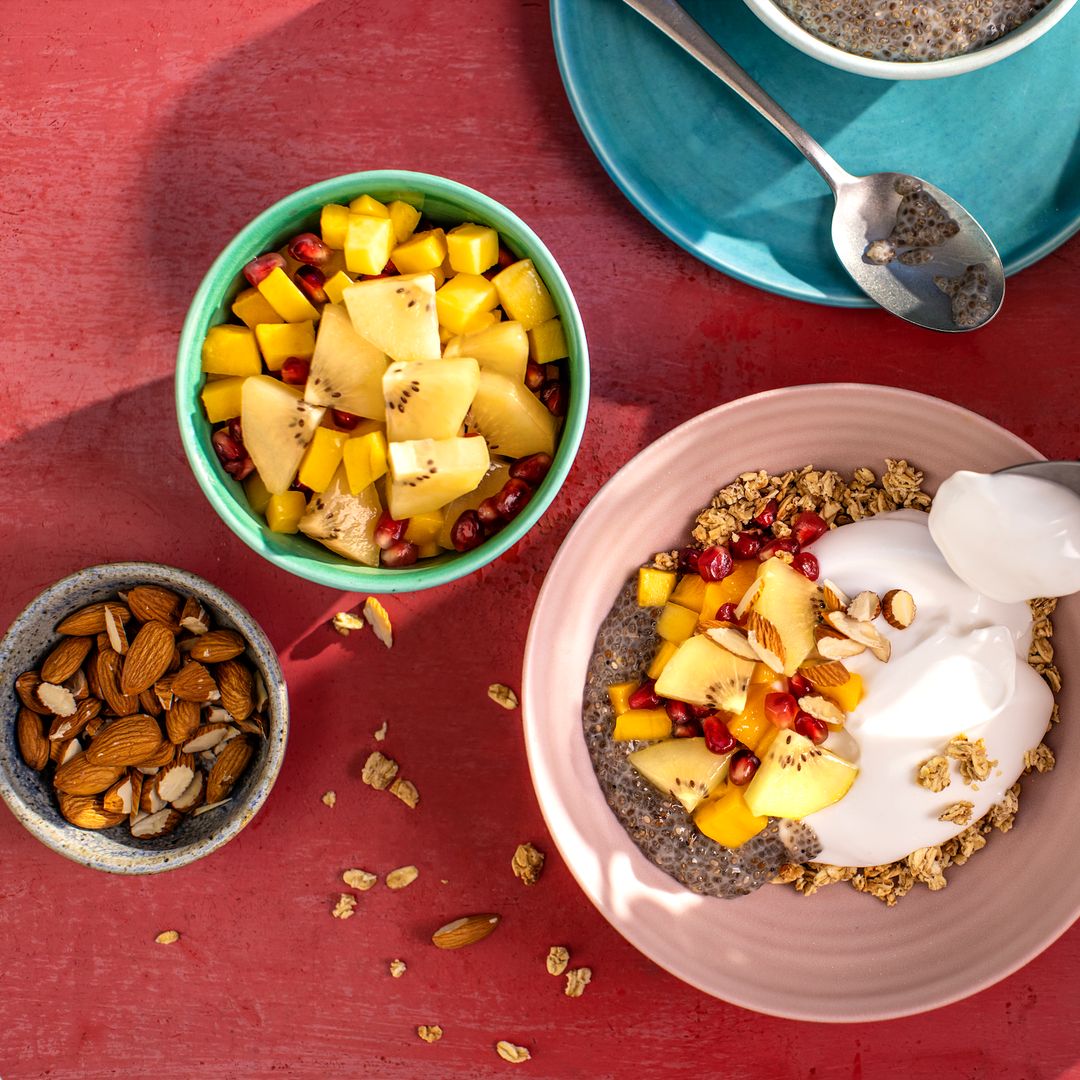Radhi Devlukia-Shetty is a constant source of inspiration and positivity to her 2.3 million Instagram followers.
Not only does she share the tastiest, most nourishing recipes, (her sweet potato and bean curry is a must-try), but she also encourages us to transform our kitchen from a place of cooking to a place of nourishment in all parts of our lives, and that's a notion we can get on board with at HELLO!.
To celebrate the launch of her first book, JoyFull, Radhi shares her nine food-based tips for living a joyful life – including why chewing our food is essential for our happiness and why cold drinks are a recipe for trouble when it comes to digestion.
1. Eat until satisfied, not stuffed
Ayurveda recommends that we eat until we are three-quarters satisfied versus 100 percent full. Overeating increases the production of free radicals or unstable molecules that build up in the cells and can cause damage to other molecules, such as your genetic material (DNA) and proteins (the building blocks of just about everything in your body).
This overwhelms and weakens the digestive fire, which can inhibit your ability to break down foods and in turn lead to chronic health issues. When you give yourself a chance to tune into how your body feels as you eat you’re much less likely to overeat while still providing your body with the nourishment it needs.
2. Chew your food
Chewing breaks down your food, which makes it easier for your body to absorb and utilise the nutrients in the food.
You’re also stimulating the production of digestive enzymes. But what’s also truly powerful about chewing is that it allows you to experience your food – notice the textures, the sour, the sweet, the heat. It turns eating into a sensory experience, which is yet another way to aid digestion while also leaning into the pure bliss of your food.
RELATED: I'm a nutritionist and this is how to reset your diet for a healthier 2024
The act of chewing seems really obvious, but you’d be surprised how few of us actually chew (myself included!). The recommended amount to chew is thirty times. Per bite. That’s right. But I say start with fifteen since chewing a mouthful of rice thirty times can seem a little tedious at first! As you practice chewing more completely, you’ll see what it feels like for your food to be ready to move on to the next phase of digestion.
3. Avoid cold drinks and iced beverages
If your digestion is like a fire, imagine what introducing a cold drink can do to that flame. Anything that dampens that fire will make digestion more difficult. In scientific terms, cold beverages cause your blood vessels to constrict, which can hinder digestion and the process of absorbing nutrients.
Every once in a while is fine, but overall, most of the beverages I recommend are enjoyed warm or at room temperature. Similarly, drinking large amounts of liquid during your meals can slow down your digestion because the added fluid dilutes the stomach acids that break down your food. Try to stick to 120ml hot water, warm water or room-temperature water at mealtimes.
4. Eat without distractions
If you are eating while watching TV/working/chatting, it increases the chances of overeating and not chewing your food adequately. Not only are you missing out on the nourishing experience of eating but you’re also making it more difficult for your body to digest your food. Remember that food is the main source of nourishment for your body – it’s a sign of respect to honour it with your full attention! Or at the very least be mindful of what else you’re exposing your senses to.
If you do want to have a conversation over a meal or listen to music, make sure it’s relaxing and calm. (This should make you think twice about who you invite over for dinner!)
DISCOVER: What to eat to feel happier this winter according to a nutritionist
5. Avoid snacking
Your body needs at least three hours to digest a meal, so eating between meals can disrupt the digestive process and lead to incomplete digestion. Over time, this can result in the accumulation of ama or toxins, which can present as any number of mild to moderate symptoms, such as bloating, gas, grogginess, diarrhoea, lack of appetite, fatigue, bad breath, residue on the tongue and strong-smelling sweat.
6. Cook and eat with love
Remember to infuse your meals with the energy that you want your body to receive. Think positive thoughts, talk or sing to your food (I said it once and I’ll say it again – it’s silly, but it works!), picture each element of a dish and what it’s doing to benefit your body.
Then, before you tuck in, take a moment to say thank you for this beautiful meal – even if it’s just toast. Give gratitude to the hardworking people who grew these plants, to the plants themselves for what they’re about to give your body, to God or the Universe or Mother Nature for providing all we need to live another day with good health and abundance, to the person who created the meal and to yourself. Follow my recipe below and give gratitude while you make it...
7. Eat and cook with your hands
One of the easiest ways to connect your senses with your meal is to physically touch your food. I realise not every dish lends itself to eating with your hands, but many do, and no one said you can’t pick at a salad with your fingers!
This also extends to preparing meals – tossing salads, arranging elements on a plate and sprinkling fresh herbs over a dish are all lovely ways to feel your food and impart that much more of yourself when you cook because touching the food directly connects it to you and your love.
8. Eat your dessert before dinner
If you’re following Ayurvedic practices to the letter, then ideally you would enjoy sweeter indulgences before a meal, not after. That’s because sweets are always digested first, so if any other food is in your system, your body will stop digesting it in favour of the sweet, leading the undigested food to ferment and toxins to accumulate in your digestive system.
9. Go for a walk
While sitting or lying down after a meal may be tempting, try to resist. Sitting essentially quashes the digestive tract and slows digestion. It can even lead to indigestion. Instead, go for a little stroll, a lil’ dawdle – nothing crazy, just 10 to 15 minutes – then come home and get cosy on that sofa.
